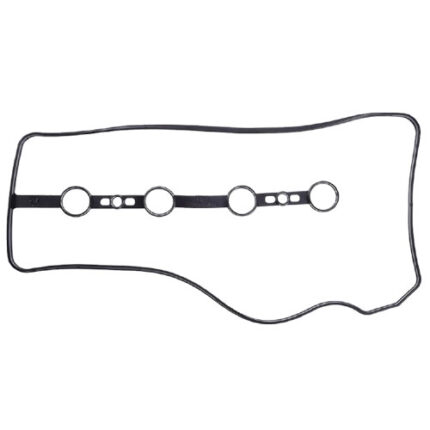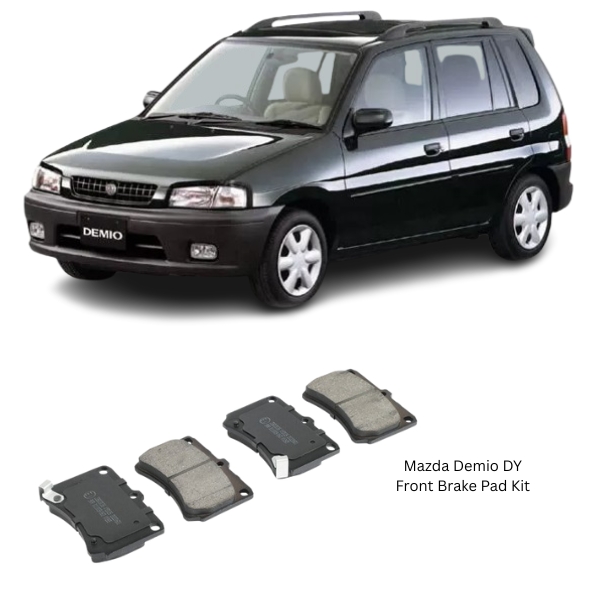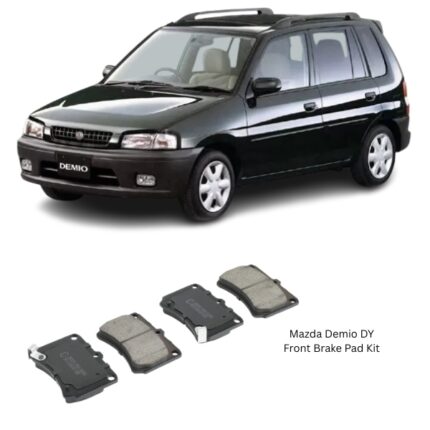Get Mazda Demio DY Front Brake Pad Kit D3062 in Kenya
The Front Brake Pad Kit is a vital component of any vehicle’s braking system, engineered to provide the stopping power necessary to ensure safety, control, and performance. Positioned within the front brake calipers, these pads make direct contact with the brake rotors to create the friction needed to slow or stop the wheels. As the front axle handles the majority of a vehicle’s braking force—often up to 70%—ensuring that the front brake pads are in peak condition is essential to safe and responsive braking.
This kit contains all the components required to fully replace worn or damaged front brake pads, making it an ideal solution for both preventive maintenance and urgent brake repairs. Whether for daily commuting, urban driving, or highway cruising, a front brake pad kit ensures reliable deceleration and a smooth braking experience.
Purpose and Function of Front Brake Pads
Brake pads work by clamping against the surface of the brake rotors when the driver presses the brake pedal. This friction converts the vehicle’s kinetic energy into heat, which is then dissipated. The efficiency and quality of this process directly influence:
-
Stopping Distance
-
Brake Response Time
-
Brake Fade Resistance
-
Overall Safety
The front brake pad kit ensures the braking system operates effectively by including matching components that are designed to work together. These kits are meticulously engineered to meet or exceed standard friction and durability requirements, providing a balance between stopping power, pad longevity, and driving comfort.
Components Typically Included
A complete front brake pad kit generally consists of the following parts:
-
Brake Pads (x4)
Two inner and two outer pads designed to fit into the left and right front calipers. Each pad includes a friction material bonded to a metal backing plate. -
Shims & Anti-Squeal Plates
These metallic or composite inserts are fitted between the brake pad and caliper piston or bracket to dampen vibrations and reduce noise. -
Pad Wear Indicators (where applicable)
Either mechanical clips or electronic sensors that signal when the pads are nearing their minimum thickness. -
Hardware Kit (optional in some kits)
May include abutment clips, retaining pins, or spring clips to secure the pads in the caliper housing and ensure proper movement and alignment. -
Grease Packets or Lubricant (optional)
High-temperature silicone-based brake grease is included for use on pad edges or hardware to prevent squeaking and ensure smooth operation.
Material and Friction Compound Types
Brake pads are manufactured using various friction materials, each with specific properties tailored for different driving conditions. Common materials include:
-
Semi-Metallic
Made from a mix of metals (iron, steel, copper) and fillers bonded with resin. Offers high durability and excellent heat dissipation, suitable for heavy use or performance demands. -
Ceramic
Composed of ceramic fibers and bonding agents, often quieter and cleaner with less dust, ideal for everyday drivers who prioritize comfort and reduced maintenance. -
Low-Metallic NAO (Non-Asbestos Organic)
Contains organic materials with small amounts of copper or steel to enhance performance, offering a blend of quiet operation and reliable friction. -
Fully Organic or NAO
Made from rubber, glass, or resin composites. Provides softer braking, often used in lighter vehicles, but with reduced lifespan under aggressive braking.
Each compound has its trade-offs between longevity, dust generation, noise, and thermal resistance. The front brake pad kit is engineered to match these parameters, ensuring dependable operation under varying temperature and load conditions.
Performance Features
High-quality front brake pad kits come with a variety of features designed to enhance performance and durability:
-
Precision-Cut Backing Plates
Ensure perfect fit and alignment inside the caliper. -
Chamfered Edges and Slotted Surfaces
Help in reducing vibration, improving pad-to-rotor contact, and aiding in gas and dust dispersion. -
Thermal Scorched Surface
Some pads are pre-burnished to reduce break-in time and improve initial bite. -
Low Copper or Copper-Free Formulation
Meets modern environmental regulations and reduces environmental contamination from brake dust. -
Vibration Damping Layers
Multi-layer shims and bonded damping sheets reduce squealing and improve pedal feel.
Installation Guidance
Installing a front brake pad kit is a common maintenance task for trained technicians or knowledgeable vehicle owners. The procedure typically involves:
-
Lifting the front of the vehicle securely.
-
Removing the front wheels.
-
Unbolting the caliper and suspending it without stressing the brake hose.
-
Removing old pads and cleaning the caliper bracket.
-
Installing new pads along with included shims and hardware.
-
Reinstalling the caliper and tightening to specification.
-
Pumping the brake pedal to seat the pads before test driving.
Proper installation ensures optimal braking performance, extends the life of related components such as rotors and calipers, and reduces the risk of noise or uneven wear.
Signs That Front Brake Pads Need Replacement
Brake pads naturally wear down over time. Ignoring wear can lead to metal-on-metal contact with the rotor, which severely compromises braking efficiency. Signs of worn or failing front brake pads include:
-
Squealing or Squeaking Noises
Often caused by the wear indicator or glazing on the pad surface. -
Grinding Sound
Indicates the pad material is completely worn, and the backing plate is contacting the rotor. -
Reduced Braking Efficiency
Longer stopping distances or a soft brake pedal. -
Brake Warning Light
In systems with wear sensors, the light will trigger once pads reach a critical thickness. -
Visible Wear
If the friction material looks thin (less than 3mm), it’s time for a replacement.
Regular inspections every 10,000 to 15,000 kilometers can help determine when to replace the front brake pads and maintain consistent stopping performance.
Durability and Maintenance
The durability of a front brake pad kit depends on driving style, vehicle weight, road conditions, and material type. On average, brake pads last anywhere from 30,000 to 70,000 kilometers, though this varies widely. To extend the life of your pads:
-
Avoid aggressive braking unless necessary.
-
Service your calipers and slide pins to prevent uneven pad wear.
-
Match pads with quality rotors and avoid overheating them.
A properly selected and installed brake pad kit reduces long-term maintenance costs, prevents rotor damage, and ensures confidence in braking across all speeds and road conditions.
Follow us on Facebook for more parts.




